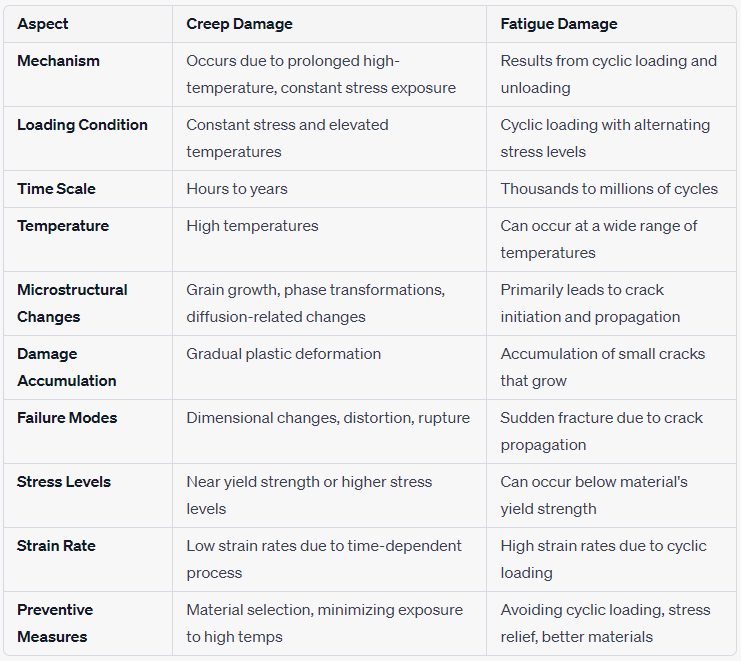Duplex Stainless Tee-Pipe Bursts | Sigma Phase Embrittlement
- matintegrity
- Apr 29, 2023
- 4 min read
Sigma Phase Embrittlement in Duplex Stainless Steel (DSS): Duplex stainless steel is a popular choice in the oil and gas industry due to its excellent corrosion resistance and high strength. However, it is susceptible to sigma phase embrittlement, which can result in a loss of ductility and fracture toughness.
Sigma phase embrittlement is a metallurgical change that occurs when a hard, brittle intermetallic compound precipitates in the material. The primary factors that affect sigma phase formation are alloy composition, temperature, and time at temperature. In susceptible alloys, exposure to temperatures in the range of 1000 °F to 1700 °F (540 °C to 925 °C) can result in the formation of sigma phase. The rate and amount of precipitation increase with increasing chromium and molybdenum content.
Sigma phase forms most rapidly from the ferrite phase therefore it forms in duplex stainless steel base metals due to their nominally 50 % ferrite phase. DSS solidify as a fully ferritic structure and then form austenite within the ferritic structure with further cooling. High ferrite contents can result from extremely low heat input welding or from extremely rapid quenching. Rapid quenching is damaging to DSS if it causes the steel to remain mostly ferritic as it cools from the high temperature exposure.
Nitrogen addition promotes austenite formation from the ferrite at a higher temperature. This allows the desired phase balance to develop quickly at temperatures high enough to enable the diffusion of all elements closer to their preferred equilibrium positions during initial solidification.
Solidification is a critical process in the production of DSS, as welding can lead to two primary problems, namely excessive ferrite in the HAZ or weld deposit and the formation of harmful intermetallic phases in the HAZ and weld deposit. Excessive ferrite content can be overcome by welding practices such as preheat or heat input, while harmful intermetallic phases can result from excessively high heat inputs or cumulative time at high temperatures.
Effects of Sigma Phase Embrittlement
Sigma phase embrittlement can result in a loss of ductility and fracture toughness, leading to cracking failure. Stainless steels with sigma can normally withstand operating stresses at operating temperatures but upon cooling below about 500 °F (260 °C) may show a complete lack of fracture toughness as measured in a Charpy impact test. Laboratory tests of embrittled weld metal have shown a complete lack of fracture toughness below 1000 °F (540 °C).
Damage due to sigma phase embrittlement appears in the form of cracking, particularly at welds or in areas of high stress or high restraint.
Prevention and Mitigation of Sigma Phase Embrittlement
The best way to prevent sigma phase embrittlement is to use alloys that have lower ferrite content and are resistant to sigma formation. In addition, the primary factor that affects sigma phase formation is the time of exposure at elevated temperature. Therefore, reducing the time at temperature can also help prevent sigma phase embrittlement.
Burst Duplex Stainless Tee Pipe Case
Piping systems in the oil and gas industry are critical components that play a significant role in the transportation of hydrocarbons from the production site to processing facilities. Therefore, any failure in these systems can result in catastrophic consequences, including loss of life, environmental damage, and financial losses. Failure analysis is essential in identifying the root cause of pipe failure to prevent recurrence of similar cases in the future. Below summary of a case study on the failure analysis of a tee pipe made of S32205 duplex stainless steel in an oilfield. In This case, the failure of the tee pipe in the oilfield was attributed to the presence of sigma phase induced by improper heat treatment after cold forming. The findings of the study underscore the importance of quality control, proper heat treatment in preventing pipe failures in the oil and gas industry. The recommendations proposed in the study provide useful guidance for quality control and prevention of future failures.
Background
During a hydraulic test in the station of an oil field, a tee-pipe made of S32205 duplex stainless steel burst into several fragments without reaching the target pressure. This failure raised concerns regarding the quality of the pipe, which was supposed to meet the requirements of the standard for S32205 duplex stainless steel. A failure analysis was carried out to determine the root cause of the failure.
Methodology
Visual inspection, chemical composition analysis, mechanical testing, hardness testing, Charpy impact testing, heat treatment, and finite element analysis were conducted to identify the cause of the failure. The initiation point of the crack was determined by fracture analysis.
Results
The results of the tests indicated that the chemical composition of the tee met the requirements of the standard for S32205 duplex stainless steel. However, the tensile properties, hardness, Charpy impact properties, and content of harmful phases did not meet the requirements of the reference standard. The presence of sigma phase, induced by improper heat treatment after cold forming, made the material hard and brittle. In the case of micro-defects, the pressure bearing capacity of the tee joint was reduced, resulting in brittle cracking.
Recommendations
Based on the findings, recommendations were proposed to prevent recurrence of similar cases in the future. The quality control of the tee should be strengthened, the heat treatment should be controlled strictly.
References:
API RECOMMENDED PRACTICE 571
API TECHNICAL REPORT 938-C Use of Duplex Stainless Steels in the Oil Refining Industry
Case study link








Comments